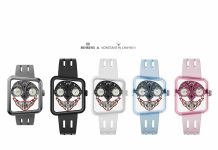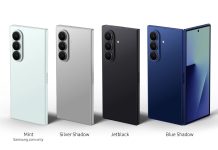Two main trends are driving modern industrial transformation today: A focus to improve productivity and boost ROI, and the comparatively low cost of IT-driven data acquisition and how it can be leveraged to enhance manufacturing.
Indeed, a recent study by LNS Research found that 45% of industrial organizations surveyed are already engaged in industrial transformation. Another 23% of companies expect to launch programs within one year. From my experience, manufacturing executives are embracing industrial transformation programs in the three areas below.

Correcting Operational Inefficiency
Unlike yesteryear’s “rip and replace” strategy in which newer and faster industrial automation systems are acquired and installed to replace an older one, the focus today has shifted towards being able to extract higher efficiency from existing equipment. Not only can gains be realised relatively quickly, but this approach sidesteps the logistics and cost – and uncertainty – of completely rebuild a process.
This is where industrial IoT (IIoT) devices enter the picture. When deployed on a tried-and-tested foundation, IIoT devices can tirelessly collect the requisite data to scrutinise equipment efficiency and identify areas for improvements. This can be boosted by modern analytics and machine learning technologies for enhanced yield and short-term returns.
For instance, leading Brazilian cosmetic producer Casa Granado successfully implemented an open EcoStruxure architecture for a 15% improvement in production yield. The system served as a base for integrating batch management and their manufacturing execution system (MES), along with some operations and maintenance tools.
A Common Foundation for IT and OT
Increased efficiencies can also be obtained by integrating industrial and engineering systems, instead of having them operate in silos. This starts with a common foundation to bridge traditional IT (Information Technology) and OT (Operational Technology) systems. While the complexity of such a task varies across organisations, there is no question that tremendous benefits can be realised with a “closed-loop digital view” for enhancing efficiency.

The national oil company of Abu Dhabi worked with AVEVA – Schneider Electric partner – to connect 100,000 data points from across more than a dozen of its operating companies into a single view. This made it possible to better manage the business by analysing both current and near-future operational requirements, and then comparing these data points with actual performance.
Creating New Customer Value
Finally, digitalisation and connectivity are also playing a vital role in the creation of new business models. Customers today are less interested in physical machines than the output produced by these devices, such as higher quality products or a shorter time-to-market. This has given rise to new business models such as performance contracting, which ties payments to metrics such as energy savings.
Finally, digital tools can precisely measure the outputs for accuracy, which facilitates the creation of new contracting arrangement by ensuring that both buyers and sellers are fully satisfied.
The current wave of industrial transformation very much revolves around connecting and enhancing existing systems for positive business outcomes. This is where a platform such as EcoStruxure can serve as an open framework by enabling new ways to solve business-driven challenges. You can read more about it here.








